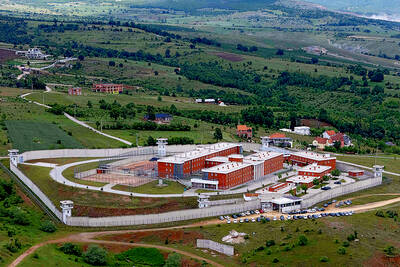The discovery of a giant alien world circling a distant star has led astronomers to believe they have located a near twin to our home planet in a far-flung corner of the galaxy. NASA scientists confirmed the discovery on Tuesday in what is a hugely significant step towards finding a second Earth-like planet capable of harboring extraterrestrial life.
The new planet is the fifth to be spotted orbiting a star that lies in the constellation of Cancer, 41 light years away. In dark skies, the star, known as 55 Cancri, is just visible with the naked eye.
Four of the planets in the system are gas giants similar to Jupiter, while the innermost planet is believed to resemble Neptune.
With last year's demotion of Pluto from full planet status to a more lowly "dwarf planet," our solar system now contains eight planets. The inner four are rocky worlds while those further out are massive balls of gas.
The NASA-funded team say the newly discovered world is similar to Saturn and orbits inside the most distant planet already known to circle 55 Cancri.
"It is amazing to see our ability to detect extra-solar planets growing," said Alan Stern, of NASA's science mission directorate in Washington. "We are finding solar systems with a richness of planets and a variety of planetary types comparable to our own."
The announcement is all the more significant because the new planet, dubbed 55 Cancri f, is the first known outside our solar system to spend its entire orbit within what astronomers call the "habitable zone."
The zone marks a "Goldilocks" band of space where the heat from a star leaves a planet neither too hot nor too cold to support liquid water, which is believed to be crucial for life.
The planet weighs about 45 times the mass of Earth and completes one orbit every 260 days. The distance from its star is approximately 117 million kilometers, slightly closer than Earth is to our sun, but it orbits a star that is slightly fainter.
Scientists involved in the discovery believe that if the planet has a rocky moon, as they expect, any water on its surface would flow freely, dramatically increasing the odds that it could harbor life.
"The gas-giant planets in our solar system all have large moons," said Debra Fischer, an astronomer at San Francisco State University and lead author on a paper due to appear in an issue of the Astrophysical Journal. "If there is a moon orbiting this new, massive planet, it might have pools of liquid water on a rocky surface."
The team also believe another planet orbits 55 Cancri, lurking between the fourth and fifth most distant worlds, which may also lie within the habitable zone.
Working with astronomer Geoff Marcy at the University of California, Berkeley, Fischer discovered the planet after observation of 2,000 nearby stars using telescopes at the Lick Observatory on Mount Hamilton near San Jose and the huge Keck Observatory in Mauna Kea, Hawaii.
The astronomers were able to infer the position and size of the new planet by analyzing shifts in starlight coming from 55 Cancri, caused by orbiting planets wrenching the star back and forth as they swing past.
More than 320 measurements were required to disentangle signals from each of the planets.
"This system has a dominant gas giant planet in an orbit similar to our Jupiter. Like the planets orbiting our sun, most of these planets reside in nearly circular orbits," Fischer said.
Marcy, who contributed to the paper, said: "The significance is marvelous, I think. We now know that our sun and its family of planets is not unusual. This discovery shows that our Milky Way contains billions of planetary systems, many as rich as our own solar system. We strongly suspect many of those planetary system harbor Earth-like planets."
To date, more than 260 planets have been discovered beyond our solar system.
"This work marks an exciting next step in the search for worlds like our own," said Michael Briley, an astronomer at the US National Science Foundation. "To go from the first detections of planets around sun-like stars to finding a full-fledged solar system with a planet in a habitable zone in 12 years is a testament to the years of hard work put in by these investigators."

Packed crowds in India celebrating their cricket team’s victory ended in a deadly stampede on Wednesday, with 11 mainly young fans crushed to death, the local state’s chief minister said. Joyous cricket fans had come out to celebrate and welcome home their heroes, Royal Challengers Bengaluru, after they beat Punjab Kings in a roller-coaster Indian Premier League (IPL) cricket final on Tuesday night. However, the euphoria of the vast crowds in the southern tech city of Bengaluru ended in disaster, with Indian Prime Minister Narendra calling it “absolutely heartrending.” Karnataka Chief Minister Siddaramaiah said most of the deceased are young, with 11 dead

By 2027, Denmark would relocate its foreign convicts to a prison in Kosovo under a 200-million-euro (US$228.6 million) agreement that has raised concerns among non-governmental organizations (NGOs) and residents, but which could serve as a model for the rest of the EU. The agreement, reached in 2022 and ratified by Kosovar lawmakers last year, provides for the reception of up to 300 foreign prisoners sentenced in Denmark. They must not have been convicted of terrorism or war crimes, or have a mental condition or terminal disease. Once their sentence is completed in Kosovan, they would be deported to their home country. In

DENIAL: Musk said that the ‘New York Times was lying their ass off,’ after it reported he used so much drugs that he developed bladder problems Elon Musk on Saturday denied a report that he used ketamine and other drugs extensively last year on the US presidential campaign trail. The New York Times on Friday reported that the billionaire adviser to US President Donald Trump used so much ketamine, a powerful anesthetic, that he developed bladder problems. The newspaper said the world’s richest person also took ecstasy and mushrooms, and traveled with a pill box last year, adding that it was not known whether Musk also took drugs while heading the so-called US Department of Government Efficiency (DOGE) after Trump took power in January. In a

LOST CONTACT: The mission carried payloads from Japan, the US and Taiwan’s National Central University, including a deep space radiation probe, ispace said Japanese company ispace said its uncrewed moon lander likely crashed onto the moon’s surface during its lunar touchdown attempt yesterday, marking another failure two years after its unsuccessful inaugural mission. Tokyo-based ispace had hoped to join US firms Intuitive Machines and Firefly Aerospace as companies that have accomplished commercial landings amid a global race for the moon, which includes state-run missions from China and India. A successful mission would have made ispace the first company outside the US to achieve a moon landing. Resilience, ispace’s second lunar lander, could not decelerate fast enough as it approached the moon, and the company has